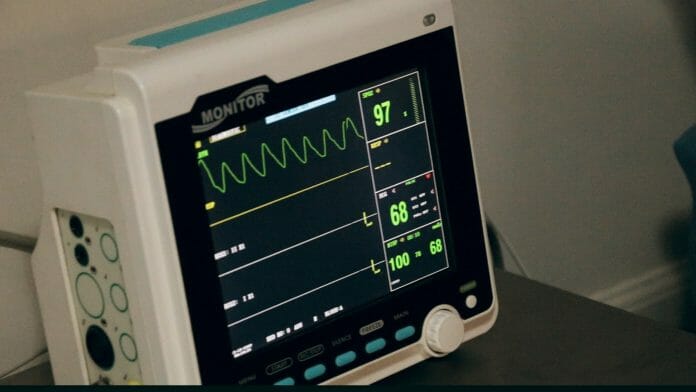By Kevin Chiow – Country Manager, GE Healthcare, Malaysia and Brunei,
The pandemic has led to significant changes in multiple sectors, industries as well as individual lives. A few sectors, however, have been impacted immensely and have undergone an overhaul and the healthcare sector is one of them.
Systemic changes across the healthcare sector are making it challenging for everyone from physicians to nurses to CEOs of healthcare systems and more to achieve professional satisfaction, as much of the problem arises from the increased difficulty in delivering sustainable, high-quality care to patients so the solution lies in a new approach to an old concept.
Talking about efficiency, the conversation is usually dominated by a sense of value-in, value-out. It’s worth noting that despite the attention given to efficiency much of the healthcare sector is still struggling with growing costs, greater pressure on providers, and anemic bottom lines.
A few innovative institutions are charting a new path, showing that steps exist to help both individuals and institutions achieve their mission while navigating through the changing healthcare landscape – the path of Intelligent Efficiency. It’s nothing short of a paradigm shift, in how we view and define efficiency that will be required to survive the seismic changes that characterize the contemporary healthcare sector.
For example, newer forms of electronic health records are often associated with an improvement in one area, such as the ability to see a greater number of patients. However, in many cases, they are also correlated with lower patient satisfaction scores and higher rates of physician burnout.
A study by the Cleveland Clinic showed a negative effect on patient satisfaction with the adoption of a new EHR system, and other studies have shown use of a poorly designed computerised physician order entry system associated with 29% greater rates of physician burnout.
And hence, the three principles of intelligent efficiency lie in integrating technology, data, and the human; being consumer-centric and provider-centric; and lastly, taking a comprehensive approach. To truly succeed in a state of systemic-level pressure, healthcare entities will need to adopt an organisation-wide ethos that, above all, prizes the smart integration of technology, data, and operations that are part of an efficient mosaic with effects throughout the hospital or clinic.
According to a study by L.E.K Consulting and GRG Health, 60 percent of hospitals in Southeast Asia, India and Australia expect to continue using increased levels of tele-health post Covid-19.
As Malaysia’s budget 2021 has recently raised the ceiling of the Covid-19 fund by RM20 billion to RM 65 billion in the healthcare industry, for the next year, a total of RM1 billion will be allocated to curb the third wave of Covid-19. For example, RM50 million will go into equipment, laboratory test supplies and medicines at the University Hospitals and adding equipment for dental, virtual clinic services as well as the provision of screening facilities and thermometers in health facilities to meet the new norm SOP.
But thriving in the new normal also means embracing the types of internal changes that will address the pressures of consumerisation and create a seamless patient experience. Healthcare entities ranging from national systems to individual physicians must thus, create systems that satisfy greater patient interest in the clinical decisions that affect both their physical and financial well-being.
Setting up systems and adopting technologies that help patients better understand their care and consistently communicate its benefits and risks, as well as reducing waiting times for tests and procedures will be essential to meeting the challenges of consumerisation.
One such example is a partnership between GE Healthcare, a local asset solution provider and biomedical engineering management services provider which launched an initiative called the Replacement Through Maintenance (RTM) initiative to manage the upgrade of CT scanners, MRI and PET scanners in Malaysia.
With the World Health Organisation estimating that non-communicable diseases account for 74% of deaths in Malaysia, digital transformation needs to be accelerated in order to address the healthcare needs and growing backlog of elective procedures[3]. The time is now for healthcare providers to start considering what to apply long-term into their workflow and infrastructure.
One example is a next-generation CT scanner that will be available soon in Malaysia. It features a hands-free positioning camera so that there is minimal contact between the radiologist and patients. The digital scans are connected to a cloud-based AI software that automatically detects and enhances the scan image, speeding up the scan process and improving diagnostic accuracy.
Another example is the concept of virtual care. Through digital technology, data from various devices that monitor the condition of a critical patient in the intensive care unit can be seen on one screen. As it is cloud-based, medical professionals will be able to view a patient’s status collectively and remotely. This can be connected to the patient’s electronic medical records in the hospital network to highlight and predict complications. This reduces workflow inefficiencies, enabling clinicians to attend to more patients and more effectively prioritise the highest risk cases, while also reducing the risks of infection.
Not only for patients, digital tools can enable remote monitoring and data analytics for equipment servicing. By remotely accessing error logs and checking the function of individual parts, an engineer may be able to determine and resolve a problem for customers in as many as 44 percent of the cases. Monitoring data analytics will allow for better predictability of an equipment’s performance, allowing engineers to schedule preventive maintenance checks in advance.
The goal of every healthcare provider then centers around serving their patients. Everything from the rising rate of physicians’ burnout to runaway costs are making it more difficult for healthcare institutions to accomplish that goal – the reason they entered the field of medicine in the first place.
This also spells opportunities not only in technology acquisition, infrastructure planning, hospital design, clinician training to even, tertiary education to ensure a steady pipeline of digitally attuned clinicians. At the heart of it, the future of healthcare will be aimed at driving precision health; healthcare that is personalised and offers scale for better patient outcomes, care experience and cost efficiency – a healthcare system that is intelligently efficient









